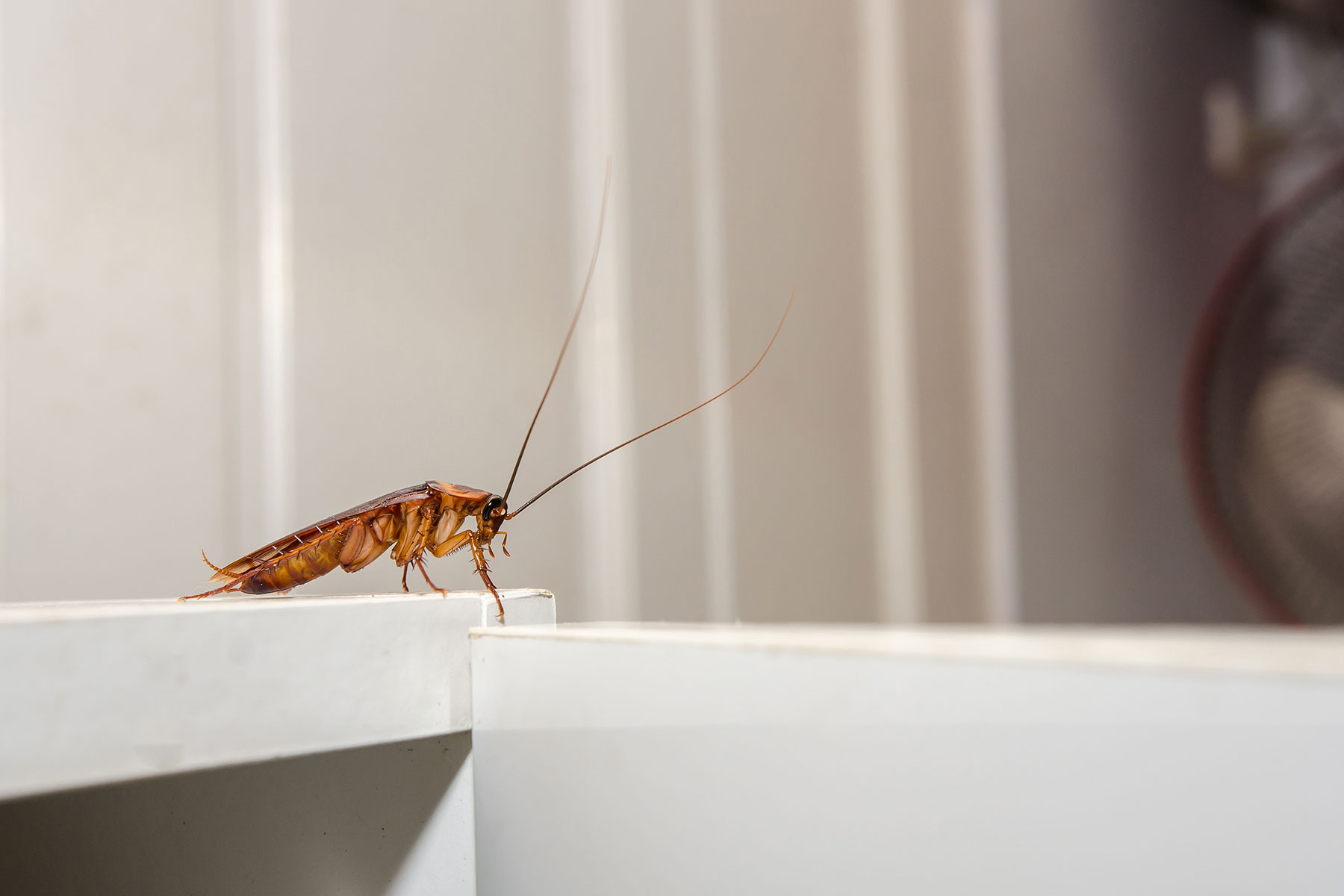Blatella germanica (L.)
Cockroaches are among the most common of insects and one of the oldest insect species. Fossil evidence indicates that cockroaches have been on earth for over 300 million years. They are considered one of the most successful groups of animals. Because cockroaches are so adaptable, they have successfully adjusted to living with humans. About 3,500 species of cockroaches exist worldwide, with 55 species found in the United States. Only four species are common pests in NY structures. The four species that are common are the German, brown-banded, Oriental, and American cockroaches.
Cockroaches are 0.5 to 2 inches long and live for 6 months to 1.5 years. They are omnivores and eat any organic substance including leftover food . They can survive for long periods without any food or water. The eggs are laid with a tough durable case which is not affected by any pest control services. As the cockroach grows, it sheds the external skeleton by a process called molting.
Cockroaches are considered pests, since they are carriers of diseases, like salmonella, dysentery, gastroenteritis. During the day, cockroaches are found in sewers and drains and are infected by harmful bacteria and other microorganisms. These are transmitted directly by the cockroach to the food they touch or by their droppings on food.
German cockroaches usually prefer a moist environment with a relatively high degree of warmth. The insects are mostly scavengers and will feed on a wide variety of foods. They are especially fond of starches, sweets, grease, and meat products. In many locations, garbage is a principal food source. As with other species, German cockroaches are mostly active at night, when they forage for food, water, and mates. During the day they hide in cracks and crevices and other dark sites that provide a warm and humid environment. Their relatively wide, flat bodies enable them to move in and out of cracks and narrow openings with ease. They may be seen during the daytime, particularly if a heavy population is present or if there is some other stress, such as a lack of food or water or an application of pesticides.
The German cockroach is the most successful of the species infesting buildings in the tri-state area. There are several reasons for this cockroach’s persistence and the difficulty of controlling it. German cockroaches produce a larger number of eggs per capsule and they undergo the shortest time from hatching until sexual maturity, resulting in a rapid population growth. A greater number of nymphs hatch successfully because the female carries the egg capsule during the entire time the embryos are developing within the eggs. Also, and most importantly, German cockroaches are smaller than most other cockroaches and can conceal themselves in many places inaccessible to individuals of the larger species.
Adult German cockroaches are 1/2 to 5/8 inch long and tan to light brown (Fig. 1). Although they have fully developed wings, they do not fly. Nymphs are similar in appearance to adults except that they are smaller and lack wings. The German cockroach is best identified by its small size and by two dark parallel lines running from the back of the head to the wings. It is usually found in kitchens (near dishwashers, stoves, and sinks) and in bathrooms of ho
German cockroaches produce odorous secretions that can affect the flavor of various foods. When cockroach populations are high, these secretions may result in a characteristic odor in the general region of the infestation. Disease-producing organisms such as bacteria, protozoans, and viruses have been found on cockroach bodies.
Different forms of gastroenteritis (food poisoning, dysentery, diarrhea, and other illnesses) appear to be the principal diseases transmitted by German cockroaches. The organisms causing these diseases are carried on the legs and bodies of cockroaches and are deposited on food and utensils as the cockroaches forage. Cockroach excrement and cast skins also contain a number of allergens to which many people exhibit allergic responses, such as skin rashes, watery eyes and sneezing, congestion of nasal passages, and asthma.







